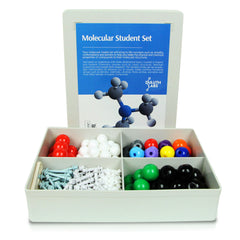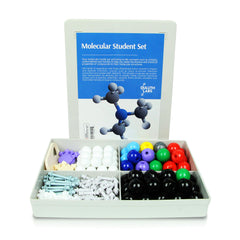BACKGROUND:
One of the important properties of carbon is its tetravalency. Carbon is a strict octet follower, which means it needs a maximum of 8 electrons to form stable compounds. Since a carbon atom has 4 valence electrons, it can form up to 4 bonds with different elements. Part of the reason why there are millions of compounds of carbon is its possibility of forming very stable bonds with another carbon atom.
A carbon atom in an organic compound is labeled or classified based on the number of bonds and type of atoms attached to it. In this post, we will specifically focus on the classification of carbon based on the number of other carbon atoms attached to it.
Carbon can be classified as primary, secondary, tertiary or quaternary depending on the number of carbon atoms it is bonded to. This classification only applies to saturated carbons. The classifications are as follow:
- Primary Carbon (1°) – Carbon attached to one other carbon
- Secondary Carbon (2°) – Carbon attached to two other carbons
- Tertiary Carbon (3°) – Carbon attached to three other carbons

If we look at the example above of 3-methylpentane, C 1 is attached to three hydrogen atoms and only one carbon atom. This means based on the classification described above, C1 is a primary carbon. On the other hand, C2 is connected to only 2 hydrogen atoms and 2 other carbon atoms. In this case, C2 is considered a secondary carbon. Lastly, C3 is connected to only one hydrogen atom and three other carbon atoms. In this case, C3 is an example of a tertiary carbon. Using the classification above, we will know that C5 and C6 are primary carbons while C4 is a secondary carbon.
This classification scheme is important as it also applies in classifying organic compounds with different functional groups. This specifically applies for alcohols, amines, and alkyl halides. It also applies in classifying carbocations and carbanions.

Note: Each vertex in the condensed formula above is a carbon atom. Since the compound does not have multiple bonds, each carbon atom will have the maximum number it can have less the number of other carbon atoms directly attached to them.
MODELLING:
To demonstrate this topic, we’ll model 2-methylbutane using our Duluth Labs Molecular Sets which has the structure shown below:

2-methylbutane, also called isopentane, is a branched-chain alkane containing 5 carbon atoms. This compound is volatile and flammable and is commonly used in the close loops of geothermal powerplants to drive turbines.
Part I -Primary Carbon
-
1

1. Get a carbon atom (black) and connect three Hydrogen atoms (white) using shortmedium connectors
-
2

2. Attach another carbon atom using a medium
Note: Since the 1st Carbon only has one other carbon atom attached to it, then the 1st Carbon is considered a Primary carbon.
Part II - Secondary Carbon
1. To the structure you prepared in Part I, attach two hydrogen atoms to Carbon 2 using short medium connectors. Then, Attach another carbon atom to Carbon 2 using a medium connector and also attach a hydrogen..
Note: Since the 1nd Carbon has two other carbon atoms attached to it, then the 2nd Carbon is considered a Secondary carbon.

Part III - Tertiary Carbon
1. Attach two more carbon atoms to Carbon 3 using medium connectors
Note: Since the 3rd Carbon has three other carbon atoms attached to it, then the 3rd Carbon is considered a Tertiary carbon.

Complete the structure by connecting two hydrogen atoms each to the added carbon atoms using smallmedium connectors.

PRACTICE EXERCISE
How many primary, secondary, and tertiary carbons are present in the 1-sec-butyl-2-methylcyclopentane?









